

Elevator Blog - Fun, quirky, interesting and informative.

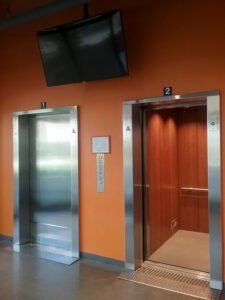
This month we are focusing on modular elevators inside the building. Believe it or not one of the most common questions we face is can the MEM Elevator System be placed inside a building?
When the product was developed as a response to the Americans with Disabilities Act in the 1980’s the concept was to provide a vertical transportation solution as fast as possible. To that end, it seemed logical (and probably was) to just set the elevator next to the building. Then just cut the holes for the elevator doors and just like that a fully installed elevator in no time. The concept worked and worked well and became synonymous with exterior placement. However after seeing the success, quality and speed people started asking for modular elevators inside the building in new and retrofit projects.
Also, the confusion is partially my fault. I have been the sole marketer for the modular elevator industry for quite sometime. So, I would be remiss if I did not take blame. But I have a good reason…it just made better visual sense to tell the modular elevator story where you could plainly see the hoistway standing along side the building. My bad.
So to make up for my shortcomings below are a few projects inside buildings.
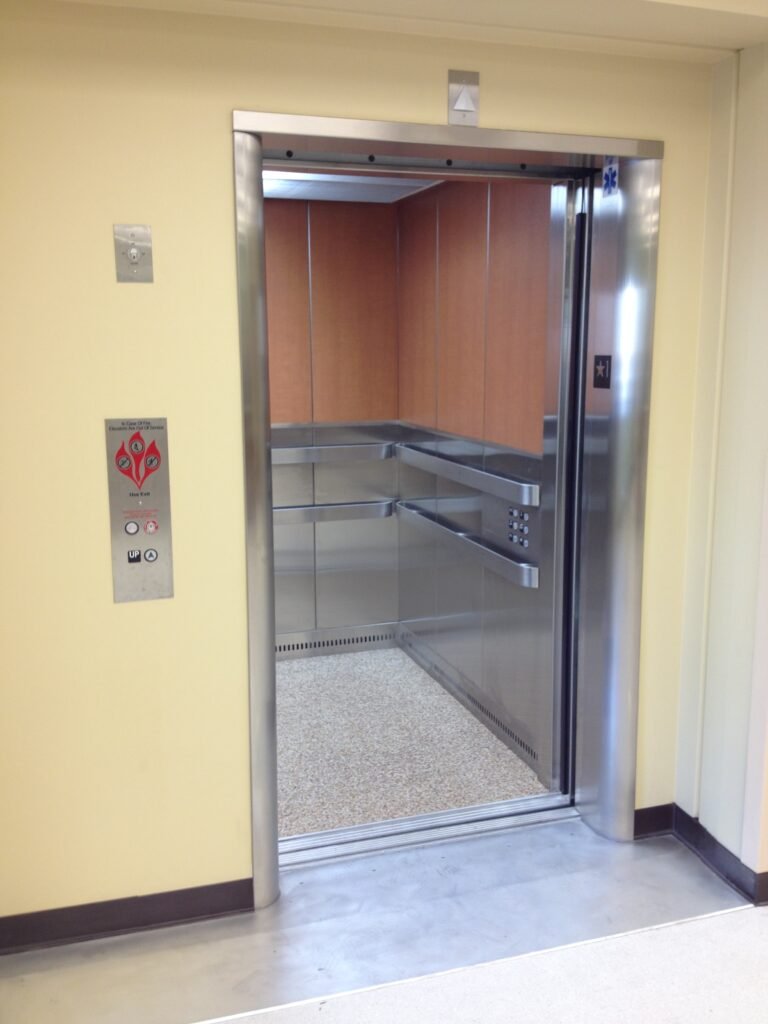
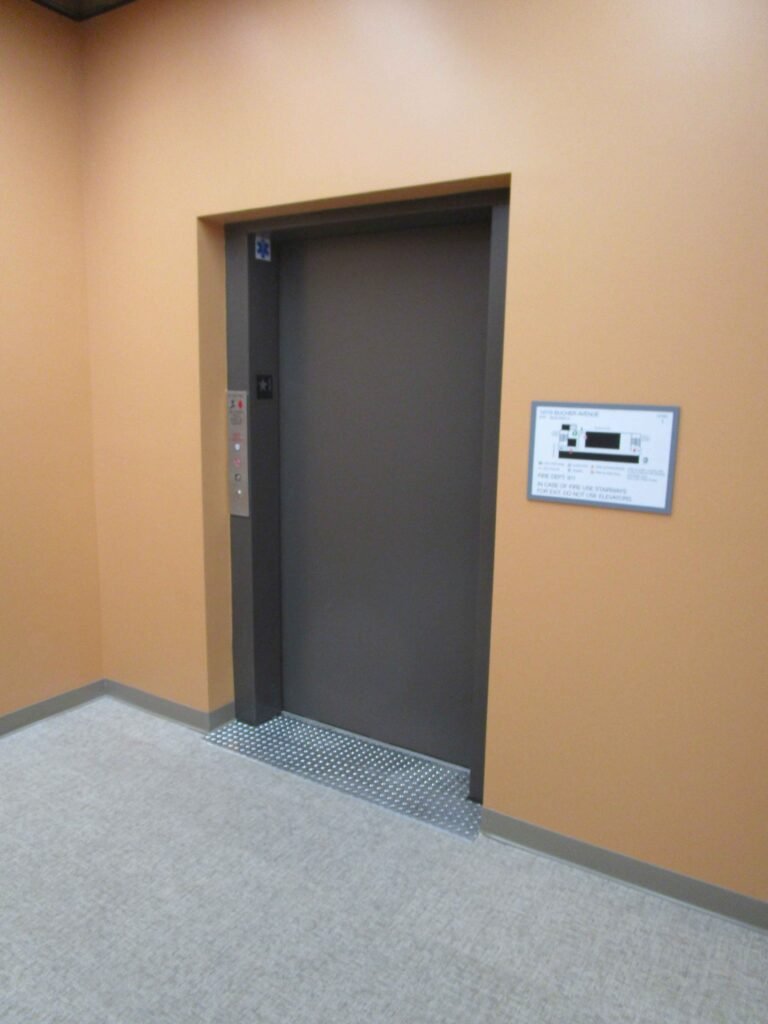


You will notice they can be in the middle of a large room or seamlessly built into a wall. It does not matter. They still go in the same way.
Usually, early in the project once the foundation is poured and the pit is completed the elevator is craned into place. The building is then constructed around the fully installed modular elevator. To make things even easier the MEM Elevator System comes with a fully drywalled hoistway inside and out.
In the video below you can see how fast and easy it is to place an elevator and build around it. Check out the elevator being placed at about 20 seconds in. The second elevator (that was also used as a construction elevator) is placed at the 59 second mark.
When it comes to retrofit projects, when the building is ready to receive the elevator a hole is cut in the ceiling and at each floor. The elevator is then slipped in with no problems.
So regardless of your project, if you are needing a midrise elevator we are your solution. Modular elevators inside, outside, new or retrofit we are your solution.

For nearly twenty years Modular Elevator Manufacturing has been leading the elevator revolution. Like any revolution there are milestones or measurements that show the growth of that movement. Markers that point to the “normalization” or general acceptance of a movement. These include: a global awareness of the product and methodology, an overall increase in market acceptance, implemented examples of the concept in completed projects, general acceptance and understanding of the advantages, and ultimately expansion of the market. Now, MEM is pleased to say, “Next stop transformation”.
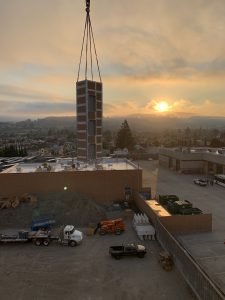
Those milestones are being realized. Now the focus is shifting from the necessity of revolution to the reality of transformation in the elevator industry itself.
When the concept of the modular elevator was first conceived, it was as a response to the Americans with Disabilities Act (ADA). Three individuals put together the original plans and started producing modular elevator units. Their concept was largely designed to sit beside an existing structure to easily and quickly make an old building compliant and more accessible. Great idea!
Many of those early units were sold and installed. But a modular delivery approach requires an understanding of construction and elevators. Ultimately, an overall lack of experience in the construction industry led to many difficulties in the installation process along with other issues. However, suggestions from the field for improvements often fell on deaf ears and so the concept, although sound, struggled to take off.
Enter TLShield. As the fledgling modular elevator company fell to failure, Tom Shield, who had installed many of the early units, took a bold step. His company, TL Shield and Associates began a new entity Modular Elevator Manufacturing (MEM) dedicated solely to the improvement and production of modular elevators. They instituted many product changes to improve the overall quality and installation process. The MEM Elevator System was born and they began producing the solution that many were looking for.
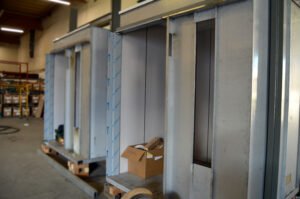
Since that time a steady march towards revolutionizing the old, tired model of conventional elevators began. Few realize the elevator industry had largely remained stuck in the mid-1800’s in the way an elevator was installed and produced. Since before the Civil War hoistways were built in a building and then the elevator was painstakingly assembled in the shaft. Crates of parts would arrive to be assembled in a closed, challenging space. That is still the way it is done in the conventional elevator sector. In an honest moment, the entire industry would agree, that makes no sense at all. Modular elevators changed all of that. They are produced in a factory, hoistway and all, shipped to the location and then the fully install elevator is lowered into place in a couple hours.
Since the beginning MEM realized that the product was revolutionary, but the revolution could easily die if a proactive approach to enlightening the construction industry failed. So education and information became the model to market the concept and high-quality product. “Next stop transformation” would take time, patience and effort but worth it. Change in any monopolistic industry is a slow steady undertaking and does not happen overnight.
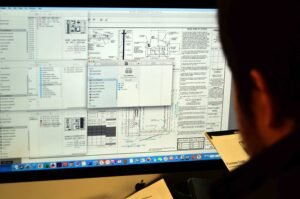
To propel that change forward, the new model became education in place of the expected sales pitch. Older iterations of the MEM website contained a voluminous amount of data, facts and specifications. It even offered up links to drawings and engineering information. Previously many considered that kind of information proprietary to their brand and did not have plans on line. However, we found transparency was the best option in how we arrived at our improvements, created awareness and helped to answer questions.
This includes passing knowledge freely to other elevator companies. Sharing and opening our facility became a routine practice and is still in practice today. When Covid hit, we offered for the first time a one of a kind virtual tour of our factory to anyone that asks. That openness and outreach remains the only online virtual tour of an elevator production facility in the world. No one opens their doors as we do. We know allowing openness and full disclosure is the only way to make our “next stop transformation” a reality.
If you want to take advantage of our live virtual tour you can do so. Just click the button.
Early on schools in California embraced the modular concept and the idea that a modular elevator would be the best and most logical choice for ADA compliance. As the sole leader in the industry we were often specced into those projects. However, I remember the day that a modular elevator was specced into a project that was not in the education sector. Obviously the day passed with no fanfare or popping corks, but I knew things had changed.

Product acceptance on a whole new level had just occurred. That was followed quickly by approved architect training through AIA, integration into new building projects not just retrofits and design/build plans being altered. This was all to incorporate our modular units into ever-widening applications regardless of the type of construction method.
We also found that big players in the construction industry were more than just curious, they were serious. They saw that a fully installed elevator set in place before lunch break was a big deal. The realization and reality of an elevator off the critical path had enormous implications. The potential of that removal from the critical path changes everything. It reduces call backs of other trades and the entire timeline and costs. Suddenly, the light bulb clicked on…there was a better way.
Acceptance of the product was also demonstrated by increases in our Fast Track quotes, formal quotes and ultimately sales. In just two short years we had to double our manufacturing floor and we are currently at all-time sales heights requiring us to look at an additional expansion or space. We now ship nationwide routinely with projects as far away as New York. All of this success was due in part to our commitment to modeling of the concept in how it works and the advantages.
Commonsense it seems has disappeared in some ways from our society. The hardest way of doing things has replaced ease and wisdom as in the construction industry’s use of conventional elevator companies. Unfortunately, their sales concepts is not one of openness and sharing. Instead we learned through our polling efforts they were sometimes sowing seeds of confusion an exclusion. There was just one way…their way.
“The elevator company knows there are not many alternatives for installation so they capitalize in the safety of us needing them more than they need us.”
Poll Respondent – August 2022
One of the respondents to our poll said it best, “It’s unfortunate knowing when entering into a project where elevators are to be installed that there will be issues and complicated schedule situations. The elevator company knows there are not many alternatives for installation so they capitalize in the safety of us needing them more than they need us.”
We have become that alternative and change so needed. As our mission is not just to offer concepts, but actual projects that clearly demonstrate higher quality can accompany speed through manufacturing.
Most importantly we stress we need each other in the building process. We know that if you just say something is better, faster, easier greener, and more cost effective it would come off looking false no matter what the intentions. Listening and conversation is our mandate.
As a result we developed cohorts for each vertical construction segment. And we developed a short poll to enable us to hear what is wrong with our industry anonymously. We do not horde the results but in an unprecedented move provide the data openly to everyone that wants to see it.
Help us improve the elevator industry by taking our short poll. It will help us shed some light on industry improvements. It is anonymous and just five short questions.
We feel the product makes the most sense and with sincerity we share what we know and have learned.
It is a huge difference as we recognize that we have succeeded where the previous company failed by listening, understanding the elevator industry intimately and making needed change. Intuitively we knew immediate improvements that would make everything better in the engineering, design and installation. Honestly some were what we would call no-brainers, plain to see from the decades of elevator experience we brought to the table.

However, it is easy to be blinded by past success. So we continue to innovate, expand our knowledge and to assess our projects from the perspective of architects, project engineers, construction managers and owners. The communication is crucial to continued success.
It is important to know that this does not mean every idea is a good idea. We methodically look at new ideas against what has worked. We think deeply and don’t jump to quick conclusions. This has led to an ever improving product line that exceeds expectations.
As our market share continues to grow we know our ideas and concepts will be and have been copied. Sometimes they are just pretenders that think anyone can produce an elevator. They struggle with quality and often seem to grope in the dark with innovation. But, when you are driving towards the “next stop transformation” philosophy ultimately the next stop includes others in the business. When you are successful at what you do people will follow.
The result is two new reputable entrants into the modular elevator industry. They have seen growth and want to be a part of the revolution. It may surprise you but, we have no qualms with that as long as they copy our quality as well. As a pioneer in the modular elevator business we are glad to have help building on what we have done.
Resolute Elevator in North Carolina has stepped up to manufacturing modular elevators in a big way and they are seeing great growth. Their background is similar to ours. They were in the elevator business for several years and even installed some modular elevators. Likewise, they were concerned for the elevator riding pubic and the concept itself when they found the modular offerings they used less than the quality they and their customers demanded. At Resolute they felt innovation was lacking and poor workmanship was the order of the day. They understand that if modular elevators become equated with substandard quality then the better concept of a manufactured elevators would struggle. They have even participated in one of our cohort groups. Their input was invaluable.
Big congrats to them and best wishes!
But a second entrant into the modular elevator industry is more curious. Thyssenkrupp (commonly called TKE), having witnessed the wisdom and potential market share of modular, has decided to stick their decidedly big toe into the elevator revolution we began so long ago. As we all know big companies move slow and ponderously and big elevator is no acceptation. After all we have been grabbing more and more of the elevator market for over a decade and our innovations have now become a staple in many construction segments.
Why does TKE embrace change now? One can only speculate. However as we know in the “next stop transformation” theory, new entrants will come from a number of sources. We are just satisfied that they, although late to the party, see that modular is viable and the future. They are just now testing their new modular system in Hong Kong, but they will eventually make it to our shores. This is not just vindication, but product justification. Now they see it and soon everyone in the construction industry will as well.
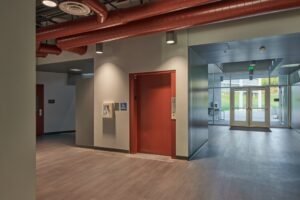
Overall this is proof positive that what we are doing is winning the revolution.
Next stop…transformation and we have been leaders in that effort longer than anyone else.
If you are interested in being a part of the elevator revolution, we encourage you to dig, explore and ask plenty of questions. We are ready and willing to be a part of your period of discovery. To get started we offer a couple opportunities below. Just click a button.


A modular project always benefits from using modular elevators. The primary reason is that the resources and knowledge are already in place and everyone understands how the modular concept works. There is comfort in understanding the modular concept.
But the benefits go beyond just mere comfort. It fulfills a need to increase speed, time and savings. Also, the MEM System does not interrupt the benefit of a modular design. In a recent Los Angeles area modular project. Studio One-Eleven designed three supportive housing buildings all based around the modular concept, so using a modular elevator was an easy choice. The advanced modular design of the project and MEM allowed the Vanowen Apartments, by use of the modular concept, reduce costs 30-35% below conventional construction. That meant a more efficient use and speedier occupancy for the chronically homeless of Los Angeles.
“Modular designs we are perfecting with our partners significantly reduce cost and construction time,” said Michael Bohn, Studio One-Eleven Senior Principal, AIA. “We may have provided the model to build it faster, cheaper and better for the affordable housing sector which could help alleviate Los Angeles’ housing crisis.” Modular Elevator Manufacturing was proud to be a part of the project.
The MEM Elevator System went in smoothly as part of the modular project package and impressed those on the project.
The benefits realized are due to an understanding of the modular concept as a whole. The pit needs to be perfect so there is a seamless match to the rest of the structure. We provide an easy to use template that assures ease of installation. With that in place the elevator easily slips in.




Once the pit is complete the fully installed elevator goes in before lunch. Then when electric available onsite, the crew returns to start up the elevator. The process is so fast that the modular elevator can be used as a construction elevator saving money on the project.
If you have a project in mind and want to speak directly to one of our representatives fill out the Fast Track form. We can provide you a thumbnail number in hours.
Lastly, this type of project takes a team. So, we would like to mention our partners in this project. Our good friends at Howard Construction were professional as usual. Their team did a great job! Award winning Studio One-Eleven provided a unique design based on the modular concept. Also, TLShield placed and started up the MEM Elevator System.

We conducted and continue to poll the construction industry regarding how well the elevator industry performs in five specific areas. The elevator poll results are beginning to paint a picture! The participants include architects, project managers, engineers, building owners, investors and everyone in between. We will be using these numbers to establish a new normal and revolutionize multi-story construction processes. As an elevator manufacturer we know there are shortcomings in our industry and this is an important first step in making changes and being a part of an elevator revolution.
Your input is valuable so let your voice be heard. You can still take the poll and we will update the results.
We have already and will continue to conduct open forums based on various construction vertical markets to get additional input. This will greatly help in fomenting the change we all need to see. You will see a picture beginning to emerge through our polling and our first discussion with the parking structure industry leaders.
With that said, here are the results of each question in the poll:
The ranking is on a one through five scale with 1 being horrible and 5 being great. This result was honestly and unfortunately not surprising. It has long been asserted that the elevator industry is not being responsive to the needs of the construction industry.
During the forum, a number of examples were put forward to explain the low numbers by the poll participants.
We were holding the forum to only an hour out of respect for time that participants were willing to expend. However, this question alone could have filled the entire hour and more.
The upshot is that the elevator industry needs to quit kidding itself. There is not only the perception of a problem deeply engrained in the industry, there is one. Other trades, owners, design/build firms, project managers and just about everyone in the construction industry feels pain points regarding the elevator. They also have real world examples of areas that need some or significant improvement.
The elevator poll results show delays. But, all construction projects have delays. And, as we know delays cost money. It pushes back occupancy, interferes with other trades necessitating call backs and rescheduling and is a headache to manage. But is the elevator industry any worse than the next subcontractor?
From the elevator poll results it appears that the elevator usually creates major delays or always causes some delays. The forum respondents backed this up with the following thoughts:
It is starting to feel like a recurring theme and we are only at Question 2. Quality communication of timelines, expectations and scheduling is a big problem. Also, the perception is that there is little care about the project overall. This seems to be consistent in the polling and the forum discussion.
As you can see the responses were varied and often based upon the role that each respondent has in the project. One of the issues the elevator industry must face is the variety of customers they must provide service to. Customers meaning anyone that they need to communicate with and have a vested interest in the project.
For instance the needs of the architect and engineer regarding the structure are very important, as is traffic flow and design. But those issues may not even be on the building owner’s radar. However, the timeline of the elevator is much more important to them and the project manager.
Overall, the forum revealed that machine roomless elevators are here to stay and have market acceptance even in some jurisdictions that were dragging their feet. This is despite the lack of need regarding speed of travel or increased costs. The space savings generally was not an issue with the parking lot sector although others, by the poll numbers, felt it was important.
Additional comments included that adding significant time to the estimated job completion due to the elevator installation was crucial. Also, costs were not generally as important as on time completion and a high-quality overall product.
This question is the one that was predictable and not a surprise in the least. It was acknowledged in the forum that they often go with the same manufacturer over several projects. However, they do not hesitate to rotate through the options.
In any case, the decision is made fairly early in the process. However, over time they have learned to build the hoistway, regarding traditional elevators, large enough to accommodate options from a variety of elevator companies.
In the forum it was surprising how often last minute changes had occurred. Last minute increases in the pricing or lack of availability of timely installation were included as the reasons.
The most common difficulty and the most glaring issue in the forum regarding the elevator is both the start up and scheduling of the inspection. That is followed by costs and overruns created by continual change orders.
There was also an acknowledgement that lack of quality communication continues to be a recurring theme. Again the timing of the state inspection was also an important topic. It seems that there are consistent breakdowns in communication. Often the contact person with the elevator company changes with turn over and then there is no notice given to the construction company. This leads to emails or phone messages going to previous employees and there being no response. As a result, the project manager has sent notice to the elevator company, but no one is there to respond.
It seems the construction company cannot keep track of the players and when they do, they are not viewed as team players.
It is still a bit early to know all the right conclusions, however even early on we can start to paint a picture. From the forum and the poll it seems communication is lacking. But, that does not mean just communication in general. Communication needs to be quality. That means awareness of the elevator processes and motivations from the selling the unit to the inspection. A step-by-step organized guide may need to be compiled with easy to follow guides to installation and start up. Not one just for modular elevators, but one for all elevators. Clear concise information is needed. That would help solve many problems.
There also needs to be a real examination of ways to increase efficiency in the process. Moving some of the sticking points closer tot he front end instead of the backend. There are better ways for an industry that has largely stayed the same since the 1800’s.
Lastly, there needs to be honesty in dealing with and commitment to our customers. Not just the folks that are paying for the elevator, but everyone throughout the process from sales to the final user. This is a significant shortfall of the elevator industry.
We still need more data from the elevator poll results to make a better assessment and improvements so please take a couple of minutes and let us know what you think about the elevator industry. Also, we want a free flow of communication, even if it is hard to say or might offend. If you look at this data a different way or see potential solutions please let us know. We want to lead an elevator revolution, but it won’t be possible without you.

Elevator Forum Produces Results. For those of you who are new to Modular Elevator Manufacturing (MEM) we are an elevator manufacturer. But not your typical company. We are trying to foster a revolution in an old industry that has not changed in 150 years. To help in that effort, we have sponsored a poll about the elevator industry so people in the construction industry can let us know the challenges they face when an elevator is part of their project. You can still participate by clicking the button below. It is just five short questions.

We then take those results and further define the issues you face by holding an open forum and clarifying the issues. The next step is then to make an honest effort to reform an industry in desperate need for a revolution. We will make changes to how we do things but also publish important information that you can use across the industry regardless of who you choose for your vertical transportation needs.
One vertical industry at a time we will be offering these opportunities for change. Our first was a success with the parking garage industry. The results of the forum were not surprising, but interesting to say the least.
First, when we said we were having a free and open discussion, we expected people to strain to participate with a largely one-sided conversation. Nothing could be further from the truth. We went through each of the poll questions and listened. To our surprise there was a lot to hear.
For instance when we asked specifically about time of completion and the elevator’s impact we were shocked at the candor.
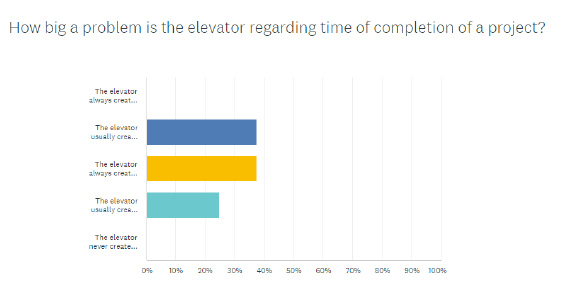
The elevator installation “Usually creates major delays” to “Usually creates some delays”.
This is a major pain-point for the builder and the elevator industry.
Discussing that single issue propelled a discussion that elevator manufacturers need to hear more about. It seems that the overriding thought from builders across the construction industry is that the elevator installer are actually looking for ways to leave the jobsite. That leaves timetables for completion unpredictable.
It turns out that elevator mechanics once they get on the site are often looking for ways to get back off the site as fast as they can. We know many of the major reasons that occurs. An emergency somewhere else is a good reason if true. But they become more difficult to swallow after that and seem more like excuses. Examples such as it is too hot or too cold in the hoistway or shaft has led to a running joke in the elevator business (especially in colder climates), the technician watches the thermometer more than the time clock. If it drops below 55 degrees, time to go home.
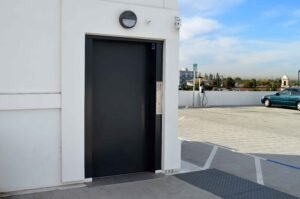
The elevator company will sometimes come clean with an acknowledgement they double booked or they are trying to finish up another job somewhere else.
You will hear that they don’t have all the parts they need.
But a new reason to abandon the jobsite from wayward elevator mechanics came to light as well. I had never heard this one before. It is too dusty in the shaft. That was a new one on me.
Overall, because of a lack of trust in the industry as a whole or lack of trust in an individual company, builders are just not buying it.
This discussion led to the most damning indictment of the whole conversation. The elevator company is just looking for reasons to leave the site and they are not team players.
“The elevator industry generally takes the opinion, too bad.”
The feeling of the group in the forum was that everyone in the construction trade from plumbers to electricians have failings; they double book, they fall short in deadlines and have cost overruns. But after its all said and done they do their best to finish the job on time as promised. The other trades think through the problem or through the difficulty and work with the rest of the team to pull it all together.
That may or may not be an accurate picture, but it is the perception. The elevator industry generally takes the opinion, too bad. That has to stop.
I always hate using football as an analogy, but it fits here. When I was playing I could miss a tackle or a block, miss a read or blow an assignment, but if I did everything I could for the team to be a success it was forgotten (usually after 100 down and ups). It is true that I might have to ride the pine, for a game or miss a first-half, but all was forgiven. I was welcomed back. No one was never endanger of being kick off the team for a mistake.
The elevator industry has a habit of acting like they can do what they want, when they want and there is nothing that can be done. Mistakes are common and often and little effort is made to make them right. If this keeps up they are going to find themselves kicked of the team.
But the time for change is coming. A revolution is starting. It may begin small, but we are hoping to detect the pain-point through the polling and forums and then lead to find solutions. It is going to take honest communication throughout the construction industry from architects to elevator maintenance companies, but change is on the way.

And this leads to the final point where we usually turn all this information into a pitch for our revolutionary product. Yes, you can click the links below for more information if you want, but that is not the purpose.
If you want to be a part of the elevator revolution and improve the way the elevator is placed, designed, started up and maintained we invite you to be a part of the solution. You can start by taking the simple five question poll. It will only take a couple minutes. You can then contact us and ask to be included on future phone conferences. We will discuss the poll in its entirety and you can have a hand in influencing the future of the elevator industry.
If you want more information about the MEM Elevator System just click the link below.


Shark Bite and Modular Elevators – Newhart Middle School/Mission Viejo, CA. Innovation can be hard to accept and try. In Mission Viejo however, they are embracing innovation and teaching it in a brand new facility at Newhart Middle School.
At the recent open house Superintendent Kirsten Vital Brulte said, “We look forward to seeing how they use this innovative space to further their STEAM education.” There is no doubt the facility will be put to good use, but there could be a bigger lesson about innovation and acceptance of technology that we all could learn.
This lesson of trying innovation struck a cord with me during a recent home renovation. We added on to our modest farmhouse a kitchen and upstairs bath. Of course to keep the costs under control, my wife and I decided to do some of the work ourselves. I am not totally without skills. The result is we took over some of the obvious stuff that we knew we could do. Painting, trimming out windows and doors and baseboards.
I also considered making the plumbing a DIY project. It was just a sink and dishwasher in the kitchen. Pretty straight forward. However, I was worried as it had been sometime since I sweated pipes. I then looked into Shark Bite plumbing and my suspicious mind started racing. It looked easy…too easy. If I used the snap together plumbing, I would definitely be able to avoid the difficulties of copper, but at what cost? Was this truly going to snap together so easily and hold?
I would have definitely saved a ton of money, been able to put the plumbing in faster and complete the job on my schedule, meaning the kitchen would be ready sooner. You can only eat take-out off of paper plates for so long.
Ultimately, however, I wasn’t convinced. I just couldn’t do the job with this new fangled product.
We got a great reference for a plumber and so after he saw the plans and agreed, I wrote a check and scheduled the job. Weeks went by but in his own sweet time he arrived. However, as he clambered out of his van, what did I see? Rolls of PEX tubing. Also, all his shelves were filled with connectors and fittings for snap together plumbing. He said that for jobs like mine, that was what everyone is using. It was easy and quality.
I watched agog as he went to work. It was as he promised and I had been a fool. I could have saved money, time and effort by doing it on my own with a more advanced product. Before lunch, he was out the door telling me to call if there were any problems and let him know when everything else was done so he could set the fixtures.
I guess you sometimes just have to live to learn.

I immediately saw parallels between Newhart Middle School, Shark Bite and Modular Elevator Manufacturing. The MEM Elevator System and snap together plumbing have been on the market for over twenty years. Both are innovative and have revolutionized their industries. They are proven to reduce time, reduce costs and are just as good as what they have replaced. High-quality is a must for a commercial elevator.
Lastly in my case regarding plumbing anyway, both struggle with acceptance. Shark Bite and modular elevators have a hurdle to clear. They must convince the market by seeing them in action and by being open and honest about what is offered and the differences between the revolutionary and conventional.
So we are working hard to provide examples of our product, like Newhart Middle School pictured. What you are seeing is a fully installed elevator being placed through a hole that was left in the build. It was set in just a couple hours and was started up in a couple of days. Revolutionary!
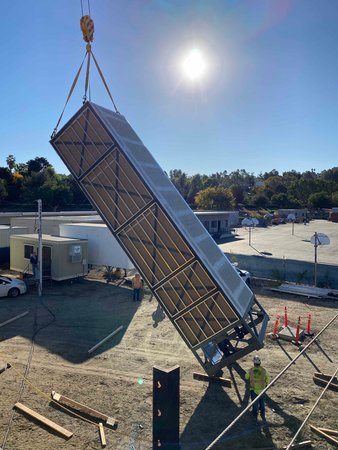



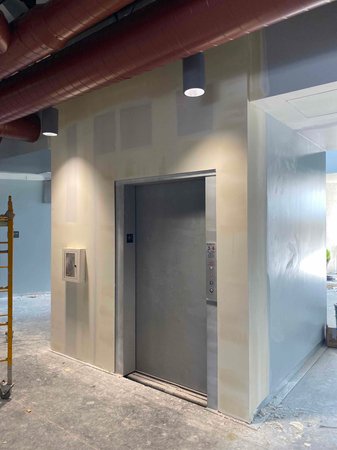
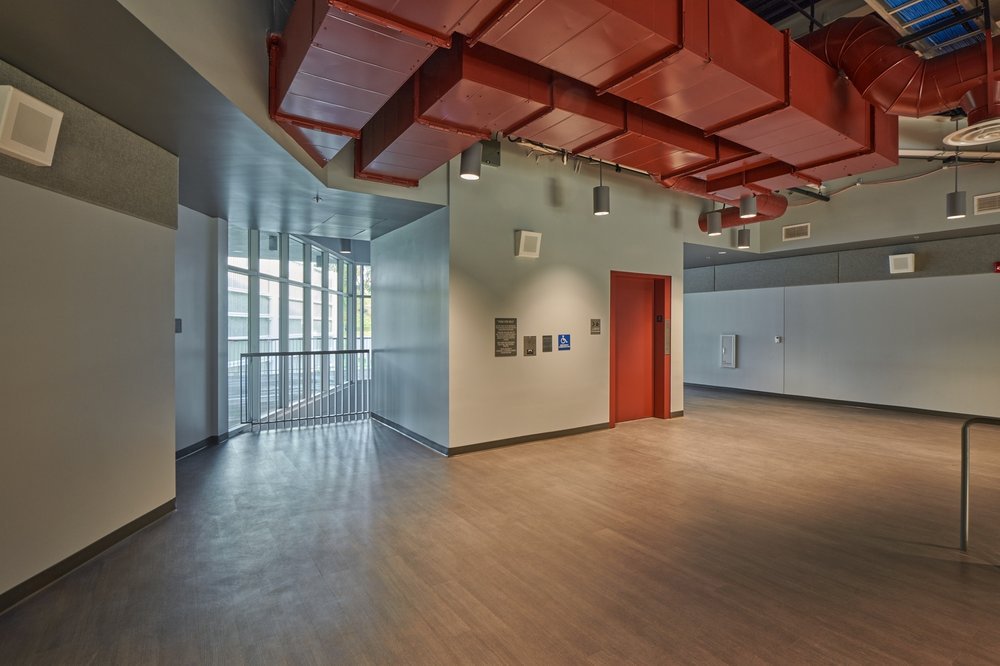
As you can see, the project looks great. It went in faster for the school with no disruption to classes and overall their embracing of innovation in what they teach and how they teach it, will be a lesson for all.
If you would like to see about this project or others like it, we are opening up our factory to live, virtual tours at your convenience. All you have to do is click the button and fill out a simple form. We will then schedule the tour at your convenience. During the tour we will answer any and all questions. You can also schedule an in person visit as well.
Lastly, if you have a project in mind and want to speak directly to one of our representatives fill out the Fast Track form. We can provide you a thumbnail number in hours.
For more great photos of the project, visit our good friends at Miller Construction. Their team did a great job!
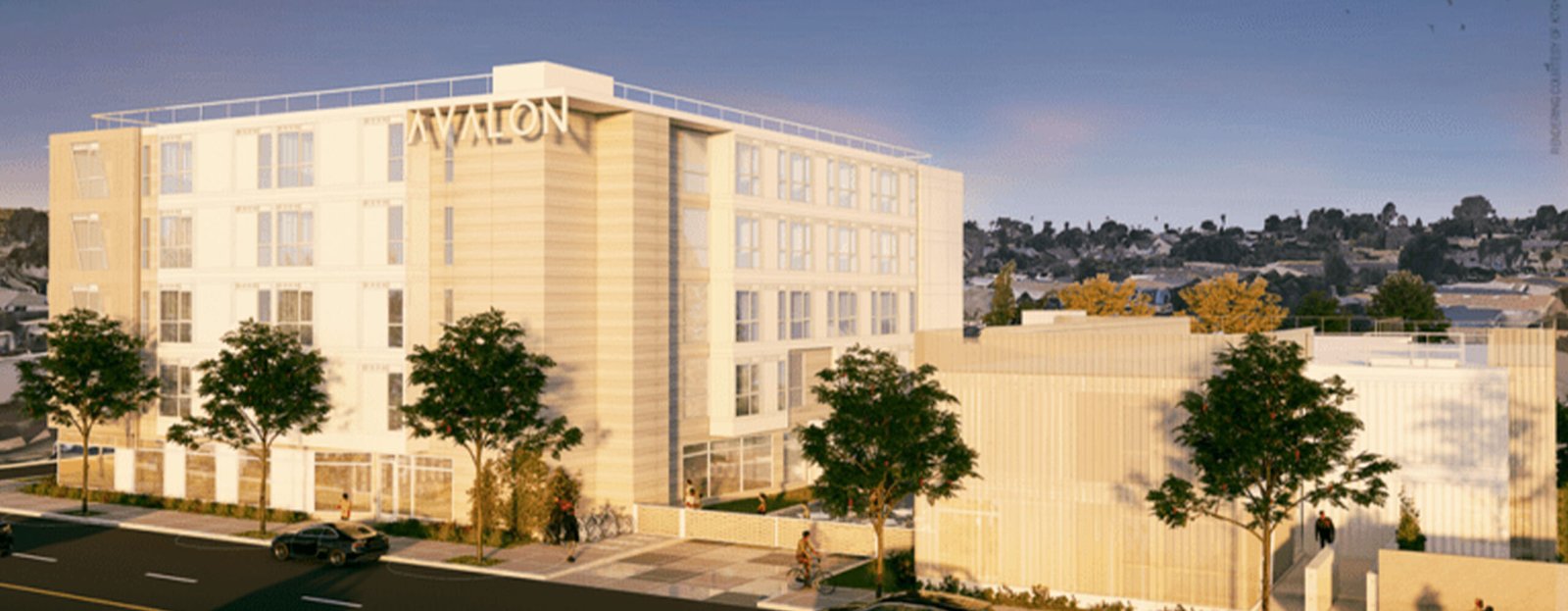
Hope On Avalon/Los Angeles, CA – When it comes choosing the elevator type for any job, Modular Elevator Manufacturing will help. We are not a one size fits all elevator company, trying to shoehorn projects into a singular kind of elevator. Also our vast experience and knowledge helps guide during the project in making the best choices.
That’s the case at our current elevator jobsite at the Hope On Avalon project in Los Angeles. On that project we partnered with Ed Grush – project general contractor, KTGY – project architect, Silver Creek Industries – modular supplier and Danny Moizel at HGB Modular – consultant. Working with that group is like working with the dream team of construction and all were a joy to work with. They are each knowledgeable, experienced, have well run organizations and are leaders in the construction industry and modular industry as well.
They came to us needing a 5-story elevator for a transitional and supportive housing project. The solution was a stackable hoistway and an in-ground hydraulic jack. Setting the fully installed elevator was complete in just a couple hours. We were glad to be a part of the project.
Using an in-ground jack was the best solution for the project. It has a fast, smooth ride that will serve the purposes well. The cab is made of tough Galvaneal steel with vandal resistant hall calls and buttons. It will handle the rigors of service for decades. We do not use wood core or particle board with the MEM Elevator System. Galvaneal reduced mold issues, chipping, breaking and warping that can occur with wood core cabs.
As you can see in the video, the hoistway is built with tough 4X4 inch steel meeting all requirements. All the elevator components are installed and then it is wrapped in drywall ready for cladding. The elevator and jack arrive on a truck and then the in-ground jack is simply lowered into the pre-drilled hole. The elevator bottom section is placed on top. Then, the upper section is lowered in the same way and connected. The right elevator for the right job. Fast and ready for electric and start up.


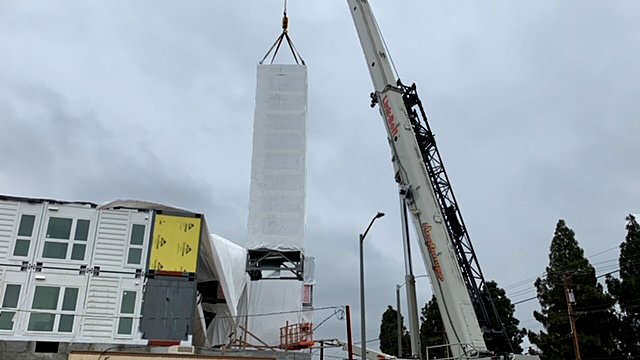
The mission of this project is important. The elevator and the Hope on Avalon project are crucial to combat the growing homelessness issues in Los Angeles. There are several benefits for supportive housing with the MEM system:
In conclusion, it maybe time to explore the possibilities further regarding supportive housing elevators. Let’s see if the MEM Elevator System can meet your needs. We would love to be a part of recommending an elevator type that suits your project best. You can click the button below for a Fast Track Quote for a project you currently are working on. However, if you want to explore it more, request a LIVE VIRTUAL TOUR. We would be happy to pull back the curtain. We will show you how we produce the industry’s most successful modular elevator solution.


Place your elevator order now. There are three distinct dynamics currently at play right now at Modular Elevator Manufacturing (MEM). These dynamics may come into play regarding your elevator order. They may influence when you pull the trigger so we want to be up front in all respects.
We are facing challenges just like most of the construction industry with supply issues and inflation. Elevators are unique, but not unique enough to avoid basic economics. So the current climate inevitably leads to the following question. When do you pull the trigger and OK the elevator order? You know you need one…so when do you start the process. Below are some things to consider.
First, we recognize that times are tough or at least getting that way. These tough times extend to all your suppliers us included. As a result we want to let you know everything we can to keep you informed. See, we understand the dilemma you are in and want to be real clear and honest about the market now and how it will effect your building project. So here are three important things to think about regarding timing of the elevator order. Consider the following:
Explaining point one in more detail. There is a myth floating around out there that an elevator can be produced in less than eight weeks. Lead times for the components alone blows that old canard out of the water. It is simply not true and if it would be possible, I’m not sure I’d ride in it. How the process really works in the modular industry is the elevator begins production based on the delivery date.
“We know deliver dates change and you don’t have a crystal ball! But it is crucial to get your project in line early.”
We simply count backwards based on the time it takes to get high-quality parts delivered and for production to occur. That is when we place your elevator in line for production. Yes, some components are produced in our factory, but like discussed in other blog posts, elevator components come from just a handful of companies. So we set the day of production beginning when the parts will arrive and so production finishes when you need the elevator. Simple math allows for you to get your elevator when you need it, not before or after. As our queue is constantly filling and emptying letting us know early by placing your order gives us more flexibility. The earlier we know we are producing your elevator the better. We know deliver dates change and you don’t have a crystal ball! But it is crucial to get your project in line early.
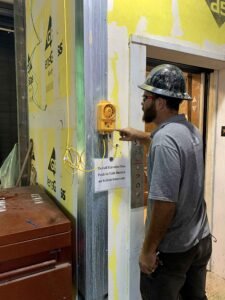
The second point is more difficult on everyone. If you don’t believe me, step outside and look at a gas station sign. The cost of everything delivered has been on a steady rise. Inflation is not “transitory” as first errantly promised and is probably here to stay for the foreseeable future.
The elevator industry has been somewhat shielded from the rise as only around 10,000 elevators are sold in the US every year. It seemed like there may have been enough chips, ropes, and buttons to go around, but supply is tightening.
So far we have done our best to hold the line, but it is becoming more and more difficult to avoid costs being passed on to us from others. That means if you are at a stage of where locking the elevator in is possible…do it now. Of course we would want you to lock in the MEM Modular Elevator System, but it is wise advise regardless.
The last point from above. With all construction costs set to increase, finding savings is crucial. Depending on the job, you may well be able to draw a line through an item completely in your budget. If you use the MEM Elevator for the construction elevator as well we save you money. But, keep in mind the first two points hold regarding timing and inflation. Lock in your elevator order now.
Nothing can be more irritating than facts especially if you don’t like them. But, this blog post laid out the facts about an elevator order and the need to think it through quickly. Because although this is about MEM, it is largely the same throughout the elevator industry (here’s an article). Prices are going to increase.
We can help you with your decision making process by giving you a live virtual tour of our factory where you can ask any question and get clear answers. To sign up click the button below. We can and will discuss any questions you have.
If you do have a project in mind and would like information on pricing, logistics, quality or our process just give us some general information. We will respond back with thumbnail prices and be ready to answer any of your questions of concerns.

Understanding the Elevator Industry – The elevator industry seems like a tough nut to crack. They tend to keep to themselves with their own language and their own priorities. They do not even like to talk about anything beyond your need for them. And so far the cloud of mystery is working pretty well. Motivations remain obscured. The technical jargon overrides any conversation. The result is the construction industry remains beholden to just a handful of providers. This is despite the elevator being a rather simple product. One box going up and down inside another box.
But can it really be that simple? It is more complex than that for sure, but the obfuscation by the elevator industry does not help their reputation.
In this blog post I am going to uncover just a few truisms of the elevator industry from the inside. In that way you will understand them or us better. Then you will be able to make more informed decisions regarding vertical transportation. So, here’s the short list. They may shock you and shake your current understanding of the elevator industry, but here they are. I will write about each in more detail below:
Now let me be clear, I am not passing judgement on the ethics of elevator companies. It is just important to understand the industry better. Our hope is that this will allow you to make better choices on your next project.
For most manufacturers, when you buy the product it ends the process. You have what you want. They have what they want (in the form of payment). Both go separate ways unless there is a problem. Not so in the elevator industry. It became apparent early on that there is a ton of money to be made in maintaining elevators. Also, as the product improved over time, it became even more profitable. The parts became more reliable and standards improved. The maintenance contract was born.
To substantiate that point, Otis in a recent SEC filings said, “New Equipment and Service, which, for the year ended December 31, 2019, contributed 43 percent and 57 percent of our net sales, and 20 percent and 80 percent of our total segment operating profit, respectively.”
Did you get that? That means is that new equipment or elevator sales while important are no where near as profitable as the maintenance contracts. Why does this matter? Because selling a type of elevator that maximizes profitability in the maintenance contract is the goal and not necessarily what you need.
One real quick example. In a low rise project often the most cost effective and best functioning elevator is a hydraulic unit. Of course that depends on several factors. Yet people have been upsold and bought a traction unit (one with ropes) when one is not needed in the least. The cost of the maintenance can be three times as much for the traction unit.
Understanding that can change perspectives on the unit required. And there are many other factors that can be influenced with that knowledge. One certainly would take more time to consider the maintenance contract and care less about the up front cost of the unit.
An often overheard phrase regarding elevators is whether parts and components are proprietary or not. Proprietary in the elevator industry does not generally mean what it does in most other industries. Proprietary components outside of the elevator business usually indicates something special. It is something that sets one product apart from the others. Or it can mean something they want to keep secret from the competition.
Not really the case with elevators. The purpose of “proprietary” parts in the elevator industry is not to hide some special trade secret or technology. After all it is just a box that goes up and down in another box. It is to prevent the building owner from hiring a different company to maintain the elevator. As mentioned above that is where additional profit comes from. If proprietary parts did not exist, any elevator technician could service any elevator regardless of brand. Proprietary parts primary purpose is to keep you locked in. Unlike most any other product, you just can’t buy a different elevator once the one you picked is in place. They have you and they know it.
Never shackle yourself to an elevator company by using proprietary parts. Ever. There are alternatives.
Have you ever been to a factory? I have had the pleasure of touring all sorts of manufacturing plants in my life time. From sausages to automobiles I have seen it all. In those facilities it is much like what you imagine. A product starts out in a simple form traveling down a line. During the trip components are added or processes completed. At the end, like magic, a brand new car rolls away or a delicious link of smoky pork sausage is made table ready.
If you are thinking about saving time and trimming costs, the traditional elevator cannot be your solution. Why? Because your jobsite just became an elevator factory.
That process is not what it looks like for big elevator companies. They do produce some components, but in real terms they are bundlers of other companies parts and pieces. They crate them, ship them and cobble them together on site. But the elevator is not manufactured at all, and the parts they actually make are limited. Believe it or not elevator companies have admitted that the real “manufacturing” takes place at the jobsite. The parts for all elevator companies come from a very limited pool of actual manufacturers.
It would be like ordering a car from Ford but instead of a drivable vehicle its like getting a crate delivered with all the parts. Then, they would send a crew to assemble it in your drive way. That is how traditional elevators are created.
This is important because a “quality” sales pitch is nothing more than that unless there is a different process all together. All elevator parts are largely the same and where they differ, they still have to meet the same rigorous standards. Could you imagine the quality issues and interruptions if your car were assembled in your garage? It really is crazy.
Why does that matter right? Really, why does it matter where the manufacturing takes place? It matters because that explains why it takes so long for an elevator installation. Also, if you are thinking about saving time and trimming costs, the traditional elevator cannot be your solution. Why? Because your jobsite just became an elevator factory.
If you choose a traditional elevator company, you will be a lot better off mentally if you just accept the way they do things. Then resign yourself to handing your site over to them until they are done. Things cannot change because the process does not change. You will never be able to hurry a project or even predict a completion date through the traditional elevator company. Believe it or not they have been installing the same way since before the Civil War…our Civil War…in the US. No other industry has moved that slowly regarding innovation.
Why are there delays? Because for the elevator to be assembled, you have to have the right factory conditions and all the necessary parts at your jobsite. One missing part can mean days of delays. If the building gets too cold the elevator crew leaves. This all slows down the process and gives little room for real improvement and no control.
The reason you have lost control of your project is it is now a manufacturing factory for an elevator.
This is usually where you would find the pitch. I have made a compelling argument now I just need to close the deal right? Wrong. At Modular Elevator Manufacturing we know the MEM Elevator System is a much better alternative than traditional elevators, but we also know that acceptance will not come overnight.
The traditional elevator companies are engrained in the construction industry. We know this! So although we care about sales, we care more about the long run. Education is the key. We need to simply inform people as to why things are as they are. Over time we will be viewed as the solution we are and we are willing to accept that. In the mean time we want to be a part of the discussion, a resource and able to give important elevator industry information. We are hoping to bridge the gap between the construction industry and our industry that will lead to better processes, innovation and installation. Our better way through modular elevators will win you over eventually. The MEM Modular Elevator System is actually factory produced and have tons of benefits, but we know recognition of that comes with time.
However, if you want a tour of our facility just click the button below. You can also request a quote if you have a project in mind. We would be glad to supply you with thumbnail numbers.

Elevator Pain Diagnosis – Our goal is to revolutionize the elevator industry and make improvements for everyone. We are not happy with the current reputation of the elevator industry and this is part of our ongoing effort to correct problems by identifying elevator pain. But, we need you! So please read on to help us change the elevator industry for the better.
The MEM Team
We have all been there. Sitting on a paper covered, padded vinyl table with nothing more on than a flimsy, backless gown that doesn’t fit quite right. As we awkwardly fidget back and forth, trying to get comfortable and avoid the cold spots on the table, we know there is something wrong that needs special attention.
We need to get rid of the pain we have been facing, but because we are stubborn or embarrassed or both, we tend to ignore the misery just hoping it will go away. As the constant discomfort begins to needle us more and more, we finally have to breakdown and try to do something about it. So we go to the exam room and after a long wait the doctor finally strolls in and the first thing out of his mouth is, “Where does it hurt?”
It is a funny question because we have already told the receptionist where it hurts, the nurse, our significant other, and anyone else that would listen to us complain. But now we are speaking to someone that can actually get to the root of the problem and make the pain, hopefully, disappear–so we tell our tale of woe.
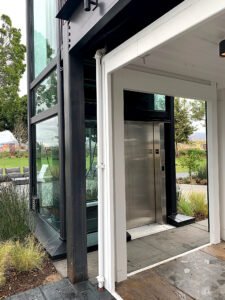
It seems with elevators and construction projects there is pain as well, but there are no experts looking for the root problem to the pain we face. But no one doubts when it comes to a multi-story project there’s a sizable amount of it. Just like the pain we feel when we have a doctor’s visit, we have told countless others about the constant throb that drives us to the brink of insanity. It is real and not unusual as it is universal to the construction industry, yet the problem seems to be undiagnosed and outside of our grasp. In the whole of the construction industry, there is nothing that slows down a project more or creates more friction than the elevator. That said how do we get relief?
It starts with assessing the pain. The list of pain points is exhausting: “We were promised a fully functioning elevator in three months,” “The cost is not what was promised,” “I am being change ordered to death,” “I call and call and no one ever answers even basic questions,” “The bad weather is delaying the elevator,” “The elevator company has halted all other construction until they are done,” “Missing parts slows the project,” “It seems the elevator company is working against us instead of with us,” “Why must they take up so much room on the site?” and more and more and more.
Each of these problems are typical and create issues that mean delays, cost over runs, and pain for all parties involved. But we are going to start doing something about it. But we need you to tell us where it hurts.
You are a leader in the construction industry. It is why you get the monthly newsletter. And we are the largest manufacturer of modular Elevators. For too long there has been a disconnect between your trade and the elevator industry. It seems we are almost speaking different languages.
Both of us seem to be missing each other in the planning, coordination, installation and start up. But that does not mean we have to accept it or live with it anymore. We can improve and to do so we are looking for some help in closing the information gap.
Ultimately, we would love to put together a guidance document for elevators in general, establish a professional group and have open forums to assist both industries with coordination and integration. However, we know and understand the value of your time. So, to get the conversation started we were hoping a simple five question poll could get us pointed in the right direction.
We hope you will help. The elevator industry has not been a very good partner in many ways, so you will not hurt our feelings by being blunt. We know making systemic changes will take honest dialog and we are willing to listen.
Here is a link to the survey. It should take less than five minutes to complete. Remember it is a starting point and we will share all of the results to begin understanding each other.
Just in case you want to see what we do, you can click to schedule a tour. Or if you are intrigued by us you can get a fast track quote.
Never miss a blog post again. Sign up for our monthly email newletter. Get important information about elevators, the modular industry and more.
